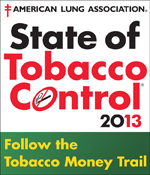Asian Americans/Pacific Islanders
Fortunately, Asian Americans and Pacific Islanders have the lowest smoking rates among adults of all racial/ethnic groups. In 2008, 9.9 percent of Asian Americans smoked compared to 22.0 percent of non-Hispanic whites, 21.3 percent of non-Hispanic blacks and 15.8 percent of Hispanics.1
However, there are also significant variations in smoking rates among sub-groups in this population. People from Southeast Asia (e.g., Vietnam, Cambodia, Laos) as well as Chinese men tend to have much higher rates of smoking than population groups from other Asian locations (e.g., Philippines, Korea, Japan).2
Key Facts About Smoking Among Asian Americans and Pacific Islanders
- In 2008, only 4.7 percent of Asian American women smoked. This rate is less than half that of Hispanic women (10.7%), just over a quarter that of non-Hispanic Black (18.0%) women, and almost one-fifth that of American Indian/Alaska Native women (22.4%).3
- Rates among Asian American men were also lower than men of other racial/ethnic groups but the differences were less pronounced than among females. In 2008, 15.6 percent of Asian American men smoked.4
- Studies have shown that Southeast Asians who had a higher English language-proficiency and who had lived in the U.S. longer were less likely to be smokers. In contrast, the average number of cigarettes smoked per day by Chinese men increases with the time they live in the U.S.5
- In 2005, smoking during pregnancy was significantly less common among Asian American and Pacific Islander women (2.2%) compared to most other racial/ethnic groups, such as American Indian women (17.8%) and non-Hispanic white women (13.9 %).6
- In 2006, 7.3 percent of Asian American and Pacific Islander high school and 2.6 percent of middle school students smoked cigarettes. This was a significant decrease for Asian American and Pacific Islander high school students since 2004, when 11.3 percent smoked cigarettes.7
- Tobacco companies are developing specific promotion strategies to target people in Asian countries. Asian smokers are a key market since smoking prevalence in most Asian countries is considerably higher than in the U.S.8 Over 300 million men in China—a little less than the entire U.S. population—are smokers.9
The American Lung Association has more information available on quitting smoking and our programs to help you do so, our advocacy efforts to reduce tobacco use and exposure to secondhand smoke, and tobacco use trends on our website at www.lung.org, or through the Lung HelpLine at 1-800-LUNG-USA (1-800-586-4872).
Sources
1. Centers for Disease Control and Prevention. National Center for Health Statistics. National Health Interview Survey Raw Data, 2008. Analysis by the American Lung Association, Research and Program Services Division using SPSS software
2. U.S. Department of Health and Human Services. Tobacco Use Among U.S. Racial/Ethnic Minority Groups — African Americans, American Indians and Alaska Natives, Asian Americans and Pacific Islanders, and Hispanics: A Report of the Surgeon General. 1998.
3. Centers for Disease Control and Prevention. National Center for Health Statistics. National Health Interview Survey Raw Data, 2008. Analysis by the American Lung Association, Research and Program Services Division using SPSS software
4. Ibid.
5. U.S. Department of Health and Human Services. Tobacco Use Among U.S. Racial/Ethnic Minority Groups — African Americans, American Indians and Alaska Natives, Asian Americans and Pacific Islanders, and Hispanics: A Report of the Surgeon General. 1998.
6. Centers for Disease Control and Prevention. National Center for Health Statistics. National Vital Statistics Reports. Births: Final Data for 2005. December 5, 2007; 56(6).
7. Centers for Disease Control and Prevention. Office on Smoking and Health. National Youth Tobacco Survey (NYTS). 2006 NYTS Data and Documentation. April 18, 2008.
8. Muggli ME, Pollay RW, Law R, Joseph AM. Targeting of Asian Americans and Pacific Islanders by the Tobacco Industry: Results from the Minnesota Tobacco Document Depository. Tobacco Control. Vol. 11 No. 3. 2002: 201-209.
9. World Health Organization. Tobacco Atlas. Accessed on June 26, 2008.
*Racial and ethnic minority terminology reflects those terms used by the Centers For Disease Control.
February 2010




